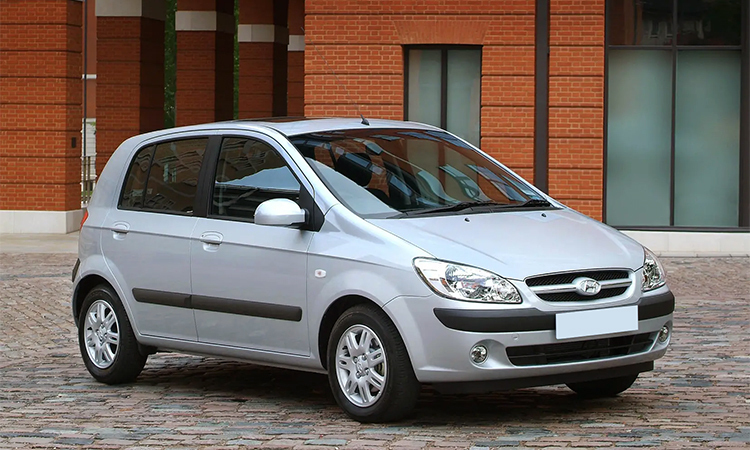AUTOMOTIVE
What is Motosas and How They are Revolutionizing Transportation

Every day, our journeys are transformed by new developments in the lightning-fast transportation industry. The emergence of Motosas, a word for a new generation of small, powerful motorized scooters, is one example of a game-changing innovation. Motosas are changing the transportation environment, and this article discusses what they are and how they work.
What are Motosas?
“Motosas,” a portmanteau of “motor” and “scooter,” stand for an innovative kind of individual mobility. These agile and stylish vehicles blend state-of-the-art technology with an emphasis on user-friendliness; they come from [give origin details]. Motosas are unique among urban mobility options since they lack certain characteristics found in conventional scooters.
Motosas vs. Traditional Transportation
Motosas stand out from more conventional forms of transportation because to their speed and efficiency. Faster than regular cars, motosas can squeeze through crowded city streets because to their sleek form. They are a sustainable option for everyday transportation because they are environmentally benign, which meets rising concerns about environmental effect.
How Motosas Work
Motosas’ creative design and user-friendly interface are the technological marvels behind them. Motosas provide a smooth ride since they use [insert unique technology here]. One reason for their enormous popularity is that riders of various abilities can use them thanks to the user-friendly controls and amenities.
Benefits of Motosas
The benefits of adopting Motosas are many and extensive. There is a strong argument for incorporating these cars into daily life because to the time and money they save as well as the reduced environmental impact they have. Commuters are finding a more efficient and cost-effective method to get around cities, all while helping to reduce their environmental impact.
Challenges and Concerns
Motosas have many advantages, but they also have to deal with problems including safety concerns and rules and regulations. The broad adoption and sustained success of Motosas in the transportation industry depend on resolving these issues.
Motosas in Urban Mobility
Motosas are essential for resolving issues related to urban mobility. These vehicles show great promise in meeting the changing requirements of city people by making transportation more accessible and easing congestion. A crucial tactic for improving overall transportation efficiency, the incorporation of Motosas becomes more important as cities expand.
The Future of Motosa’s
The future of Motosas is filled with exciting possibilities, thanks to the advancements in technology. Future developments may allow for even deeper integration into existing transportation networks, such as [insert possible breakthroughs here]. In the future, Motosas will become an essential component of our everyday lives due to their continuous evolution.
User Experiences and Reviews
The revolutionary effect these vehicles have on regular trips is demonstrated by real-life anecdotes and good comments from Motosa’s customers. Motosas are highly regarded by users for their ease, reliability, and general happiness when it comes to transportation.
Motosas in Developing Countries
Motorolas are filling a need in developing nations’ transportation networks and have far-reaching economic consequences. In areas without conventional transportation networks, their versatility and low cost make them an invaluable tool.
Safety Measures and Innovations
Motosa is taking safety seriously, which is why they are introducing new technology for helmets and creating extensive training programs. Improved rider safety and trust in Motosas are the goals of these reforms.
Public Perception of Motosas
The general public’s view of Motosa’s is shifting, with more and more people seeing them as practical and cutting-edge forms of transportation. The cultural influence of Motosas is becoming more apparent as they are incorporated into people’s everyday lives all around the globe.
Global Expansion of Motosas
Motosas are becoming increasingly popular in several nations around the world, according to market trends. The Motosa sector is growing thanks to international partnerships and cooperation, which are having an effect on transportation all over the world.
Corporate Involvement and Investments
The Motosa business is seeing an uptick in corporate interest and investment. Financial support and partnerships from the industry show that Motosas are being acknowledged for their potential to influence transportation in the future.
Conclusion
Motosas are a game-changer in the transportation industry because of the accessibility, efficiency, and sustainability they provide. Motosa’s is well-positioned to play a significant role in the transportation industry of the future, because to their influence on urban mobility and the continuous development of technology.
FAQs (Frequently Asked Questions)
Are Motosa’s safe to ride?
The development of cutting-edge safety measures and comprehensive training programs is a top priority for Motosa.
How do Motosa’s contribute to the environment?
Motosas provide a sustainable and environmentally beneficial way to commute, which in turn reduces the influence on the environment.
Can anyone ride a Motosa, regardless of experience?
Absolutely! Motosa’s are made to be ridden by people of various ability levels.
What makes Motosas cost-effective?
Motosa’s are cost-effective because of their low fuel prices and low maintenance requirements.
Where can I find Motosa rental services?
You may find Motosa rental services in many cities; just contact the transportation companies in your neighborhood.
AUTOMOTIVE
European Cars Alternator Repair Vs. Replacement Cost in USA

It can be exhausting for a person when he is ready and starts the car to be at his destination, but it is not working correctly. The reason behind this can be a faulty alternator, whose responsibility is to operate the vehicle safely. If there is an issue with the car’s alternator, it needs repair or replacement.
In this article, we’ll discuss whether to repair or replace the Alternator so you can make a better decision.
What is Alternator?
The alternator, the voltage regulator, creates electrical power to charge the battery and provide electricity to the vehicle’s electric components while the engine is still running. A malfunctioning alternator indicates that your car’s battery will soon be discharged, which will result in numerous electronic problems and ultimately cause your vehicle to break down. In this situation, it is always better to consult with European car repair Houston so they can thoroughly examine your car.
Alternators come in several types and differ in terms of fuel, size, power, and types of electric current generated.
- Diesel generators
- Petrol generators
- Gas generators
- Digital generators
The Key Elements Of Alternators
The stator and the rotor are treated as essential elements of the vehicle alternator. The stator consists of a steel plate with varying numbers of coils arranged in several blades along the circumference; a specific blade has several coils defined by the engineer.
A rotor is a steel lug (shaft) with slots that have wedges and notches. The rotor shaft is split into two layers, with a copper wire wound around each layer and a predetermined number of turns for every rotor. The purpose of this winding is to create the necessary magnetic field in the core; Its wires are directly plugged into the contact pads. During the rotation of the rotor, an electric voltage is produced in the stator.
The voltage in the alternator of the modern vehicle is approximately 13.8 to 14.6 volts. It is enough for the availability of a constant power supply for the regular operation of electrical devices, including battery charging.
Signs of Alternator Problems
Before moving to the costs, we have to be aware of the symptoms of a bad alternator in order not to overlook any signs. Common symptoms of a failing alternator include
- Dimming or Flickering Lights: If you discover that the headlights, dashboard lights, or interior lights dim or flicker while you are driving, this could mean that the charging system has a faulty alternator.
- Difficulty Starting the Engine: A problem with the alternator might be a weak or faulty alternator that fails to supply enough power, slowing down the engine when starting the car.
- Dead Battery: If, for some reason, the vehicle’s rechargeable battery becomes dead, the problem might arise from many different things, although a malfunctioning alternator may be the problem. The battery does not get proper maintenance, and therefore, the driver would have to change the battery regularly or ask for assistance.
- Strange Noises: A non-working or defective alternator may be accompanied by some noise, such as grinding, whining, or rattling, which shows that the internal parts of the alternator are probably worn out or bad.
- Electrical Issues: A spike in power consumption, like malfunctioning power windows, erratic dashboard gauge readings, or a non-functional radio, may be the cause of an alternator problem.
Cost of Alternator Repair
When your vehicle exhibits symptoms of alternator fault, the first question to ask yourself may be whether it’s possible to replace or repair the alternator. Alternator repair costs are usually determined by the extent and type of damage and sometimes by the components that might be affected. Frequent fixes for the alternator can include replacing worn-out bearings, damaged diodes, and faulty voltage regulators.
Usually, the prices for alternator repairs for European cars in the USA range from $200 to $600. This includes parts and labor costs. However, the final cost may be different because factors such as the car’s make, model, and complexity of the repair could be different, and the labor rates at the auto service shop might be different.
What Is The Cost To Replace An Alternator?
The cost of the alternator can range from about $100 to $350, depending on the car’s model. In the majority of situations, the cost of replacing alternators will be in the range of $400-500, though this may be different if other components need to be changed.
The next $20 – $50 should be additionally recorded if the serpentine belt has to be replaced. If you settle for dealership parts and labor, the bill will often surpass $500. Since the total cost will depend on the type of car, you can anticipate that you would incur between $350−$900 if you want the alternator replaced.
AUTOMOTIVE
Determining Liability for Chain Reaction Car Accidents

Introduction
In the chaotic ballet of traffic, chain reaction car accidents are a dreaded occurrence. These accidents involve multiple vehicles and often result in severe injuries and extensive property damage. Determining liability in such complex scenarios can be a daunting task, requiring a careful analysis of the events leading up to the collision. Understanding the factors that contribute to these accidents and the legal principles governing liability is crucial for both drivers and legal professionals.
Understanding Chain Reaction Car Accidents
Chain reaction car accidents, also known as multi-vehicle collisions or pile-ups, typically involve three or more vehicles. These accidents often occur on highways or congested roads where vehicles are traveling at high speeds and have limited maneuverability. A chain reaction accident can be triggered by various factors, including:
- Sudden braking: When a driver abruptly slows down or stops, following vehicles may not have sufficient time to react, leading to a collision.
- Poor visibility: Fog, rain, or other adverse weather conditions can reduce visibility, making it challenging for drivers to see hazards ahead.
- Tailgating: Following another vehicle too closely increases the risk of a rear-end collision, which can set off a chain reaction if other vehicles are unable to stop in time.
- Distracted driving: Texting, talking on the phone, or engaging in other distractions diverts a driver’s attention from the road, increasing the likelihood of an accident.
- Vehicle malfunctions: Mechanical failures such as brake failure or tire blowouts can cause a driver to lose control of their vehicle, triggering a chain reaction collision.
Determining Liability
Establishing liability in chain reaction car accidents requires a thorough investigation to determine the sequence of events and the actions of each driver involved. While every case is unique, several factors are commonly considered in determining liability:
1. Negligence
Negligence, or the failure to exercise reasonable care, is a key determinant of liability in car accidents. Drivers have a duty to operate their vehicles safely and obey traffic laws. If a driver breaches this duty through reckless behavior or inattentiveness, they may be held liable for any resulting damages.
2. Following Too Closely
Tailgating, or following another vehicle at an unsafe distance, is a common cause of chain reaction accidents. Drivers are expected to maintain a safe following distance to allow for adequate reaction time. If a driver rear-ends another vehicle due to tailgating, they may be deemed at fault for the collision.
3. Comparative Negligence
In some cases, multiple drivers may share responsibility for a chain reaction accident. States that follow comparative negligence laws apportion fault among all parties involved based on their degree of responsibility. For example, if one driver rear-ends another, but the second driver was also speeding, both parties may be assigned a percentage of fault.
4. Vehicle Maintenance
Mechanical failures such as brake or tire defects can contribute to chain reaction accidents. If a vehicle’s malfunctioning parts directly cause or contribute to a collision, the vehicle owner or manufacturer may be held liable for negligence in maintaining the vehicle.
5. Environmental Factors
External factors such as adverse weather conditions, poor road maintenance, or inadequate signage can also play a role in chain reaction accidents. In such cases, government entities responsible for road upkeep may share liability for any resulting damages.
Conclusion
Determining liability in chain reaction car accidents is a complex process that requires a thorough investigation of the circumstances surrounding the collision. Factors such as negligence, following distance, comparative fault, vehicle maintenance, and environmental conditions all play a role in assessing liability. By understanding these factors and the legal principles governing car accidents, individuals can better navigate the aftermath of a chain reaction collision and seek appropriate compensation for their losses.
AUTOMOTIVE
Cheap cars under $5,000: TOP 5 popular models

Choosing a cars $5000 and under requires a keen eye for value and an understanding of potential long-term costs. Start by prioritizing vehicles known for their reliability and low maintenance costs, such as the Hyundai Getz, Kia Rio, and Ford Focus. Inspect the car thoroughly—preferably with a trusted mechanic—to check for any signs of major wear or underlying issues that could result in hefty repairs down the line. Consider the fuel efficiency and availability of replacement parts, as these will significantly impact your total ownership costs. Models with a good track record of durability and inexpensive upkeep, like the Renault Logan and Chevrolet Aveo, are particularly attractive in this price range. Remember, a well-maintained older car often offers better value than a newer model with a questionable history, so always verify the vehicle’s service records and past owner history to make an informed decision.
Hyundai Getz
Typical Years: 2002-2009
Engine Options: Typically comes with either a 1.1-liter or a 1.4-liter petrol engine, offering a balance between performance and fuel economy.
Features: Despite being a compact car, the Getz offers decent interior space and standard features like airbags, power steering, and in later models, ABS brakes.
Fuel Economy: Expect about 5.5 to 6.5 liters per 100 km, which is quite efficient for city driving.
Kia Rio
Typical Years: 2005-2011
Engine Options: Available with a range of engines, including a 1.4-liter and a 1.6-liter petrol engine, providing a good mix of power and economy.
Features: Features on various models may include air conditioning, electric windows, central locking, and safety features like airbags.
Fuel Economy: On average, the Rio uses about 6 to 7 liters per 100 km, depending on the engine and driving conditions.
Ford Focus
Typical Years: 2005-2008
Engine Options: Comes with a variety of engine sizes, but the 1.6-liter petrol engine is common, known for its reliability and adequacy for both city and highway driving.
Features: Higher trim levels include amenities like heated seats, advanced audio systems, and cruise control. Safety features such as multiple airbags and anti-lock braking systems (ABS) are standard.
Fuel Economy: Generally consumes about 6.5 to 7.5 liters per 100 km, which is competitive for its class.
Renault Logan
Typical Years: 2004 onwards
Engine Options: Often found with a 1.4-liter or 1.6-liter petrol engine, known for straightforward maintenance and durability.
Features: Basic in terms of amenities but robust in build; later models may include air conditioning and electric front windows.
Fuel Economy: Very economical, with fuel consumption typically around 5.5 to 7 liters per 100 km, making it an ideal choice for both urban and long-distance driving.
Chevrolet Aveo
Typical Years: 2005-2011
Engine Options: Available engines include a 1.4-liter and a 1.6-liter petrol engine, which provide a reasonable balance between power and fuel economy.
Features: Standard features in these models include air conditioning, power windows, and in some cases, safety features like side airbags.
Fuel Economy: Averages around 6 to 8 liters per 100 km, depending on driving habits and conditions.
When considering these vehicles, it’s also wise to check for any potential common issues specific to each model. For instance, older Hyundai Getz models might be prone to rust, while the Ford Focus could have known issues with its automatic transmission. Knowing these details can help you ask the right questions during an inspection and avoid costly future repairs.
Always test drive the car to get a feel for its condition and how well it’s been maintained. Listen for unusual engine noises or problematic shifting in automatic transmissions, and check for smooth braking. A well-rounded inspection, ideally by a professional, should include a thorough check of the engine, transmission, brakes, and suspension to ensure you’re investing in a vehicle that will remain reliable for the foreseeable future.

 Technology10 months ago
Technology10 months agoUnlocking the Mystery of 02045996870: What You Need to Know

 Lifestyle1 month ago
Lifestyle1 month agoExploring the Wonders of myfavouriteplaces.org

 Sports6 months ago
Sports6 months agoExploring the Intersection of Sports Fashion and Personalized Design

 Sports6 months ago
Sports6 months agoElevate Your Game with Custom Tennis Fashion from Áo Tennis Thiết Kế

 Business6 months ago
Business6 months ago10 Changes to Make in Your Ecommerce Website to Reduce Cart Abandonment and Boost Sales

 general2 years ago
general2 years agoEmbracing the Enigma of örviri

 Technology9 months ago
Technology9 months agoExploring the Technological Marvel: AIOtechnical.com

 Technology10 months ago
Technology10 months agoChina SEO Xiaoyan: Unveiling the Secrets to Digital Success















